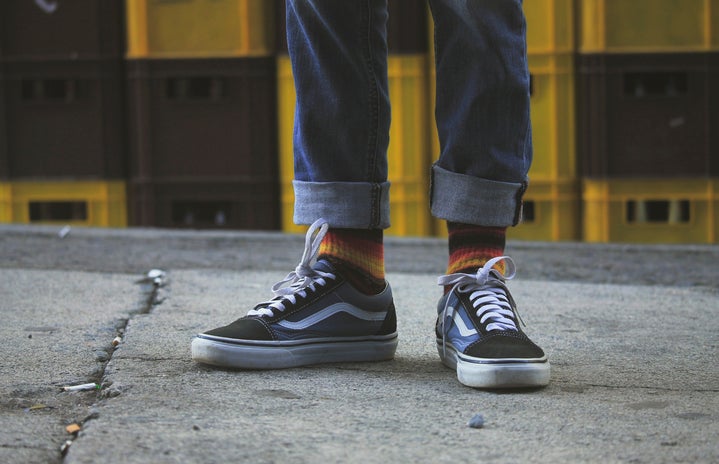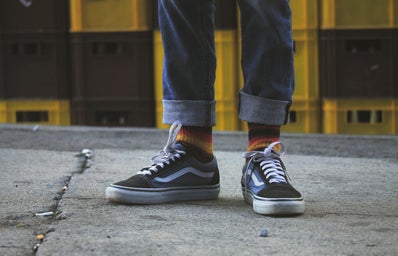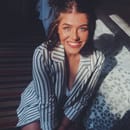Name: Tracy Vollbrecht
Major: Fashion Design
Year: Senior
Website: http://tracyvollbrecht.wixsite.com/fashiondesign
Instagram: @tracyvollbrecht @tracyvollbrechtdesigns
Her Campus: Can you tell me a little about the project that you are currently working on?
Tracy Vollbrecht: Since this is our senior thesis, each student gets to choose what they want to do. I have a friend that is doing a bridal collection, another friend that is focusing on female friendship but my collection is focused on people with disabilities and a smaller focus on women’s wear. We got to choose whatever topic we wanted, so I mainly chose this route because my dad had MS. I saw his struggle with clothing and I wanted to do something. I took fashion and wanting to help others, and merged them together.
HC: How far are you along in the process of creating this collection?
TV: I applied to be in the program in January. I had to submit a letter of intent, and a letter of proposal to get into the program. I was in the program by March. Then from March to August was when I was researching and interviewing people. I was looking up different companies that already do what I was hoping to do. I also was designing and brainstorming ideas and solutions. In the fall semester, my collection had to be narrowed down. This was kinda like a checkpoint. The original 15 looks went down to the 8 looks I have now. At the end of September we had our first muslins due. This was the first draft using cheap fabric, and it did not include buttons or zippers. Then our second muslins were due at the end of October. These had the zippers and buttons so they looked like a finished garment but using cheap fabric. In the beginning of November, we had a critique with industry professionals and after that we went fabric shopping in New York. Right now I am in the process of creating final garments. At the end of this semester, I will need to have 30% of my collection finished. The rest of the collection will be finished next semester as well as a paper.
HC: What are some of the things that you put on the clothes to make them more adaptable for people with disabilities?
TV: Basically I did not want the clothes to be just for people with wheelchairs, or people with MS. I wanted to look at a broad spectrum, so I interviewed 40 to 50 different people with a range of different disabilities and ages. I interviewed parents of younger children all the way up to ages 70 to 80. I then took the common issues that everyone said. For example, comfort is a huge consideration, way more than for you and I. For people with disabilities, it tends to be a more common factor. Irritation is multiplied, and it affects them more. All the seems on my collection are outward. The seams are laid on top of each other instead of having excess fabric on the inside. Another common thing is the difficultly of smaller items. For example, buttons can be difficult. In my collection I only have faux buttons that have magnets. For example on a skirt that looks tied, magnets hold it together. I also have zippers that are in places that are more convenient. There are no flies. They can be difficult since there can be a lot going on in that area. I also have pocket relocation. There are no butt pockets because if you are in a wheelchair, or seated al ot of times it can be an irritation. If you are using crutches, it can be hard to reach back pockets. I have a jumpsuit that has side pockets and it is transformable in length. Not everyone is the same height, and that issue can be exaggerated in people with disabilities.
HC: Is the clothing easier to put on in general?
TV: Yeah so, putting on, taking off, and being in it is more comfortable. The magnets allow you to quickly separate the item, and outwards seems make it more comfortable.
HC: What are 3 words that you think describes what you are doing as a whole?
TV: I would say inclusive mainly because the fashion industry ignores people with disabilities. Also, there is no one that can’t wear the clothes that I am making. I would say stylish, because at the end of the day we all want to look stylish. Comfortable because the style is what is going to make you buy the look, but the comfort is what is going to make you want to wear the look.
HC: What do you hope that people will take away from your collection after they see it?
TV: I think the best thing to take away is that fashion needs to be more inclusive. There is definitely movement towards that, but also everything should not be a size 2 for a 6′ model. That is not realistic, and the majority of the world is not like that. Fashion as a whole is moving more towards an inclusive realm, and hopefully I can contribute to that.



